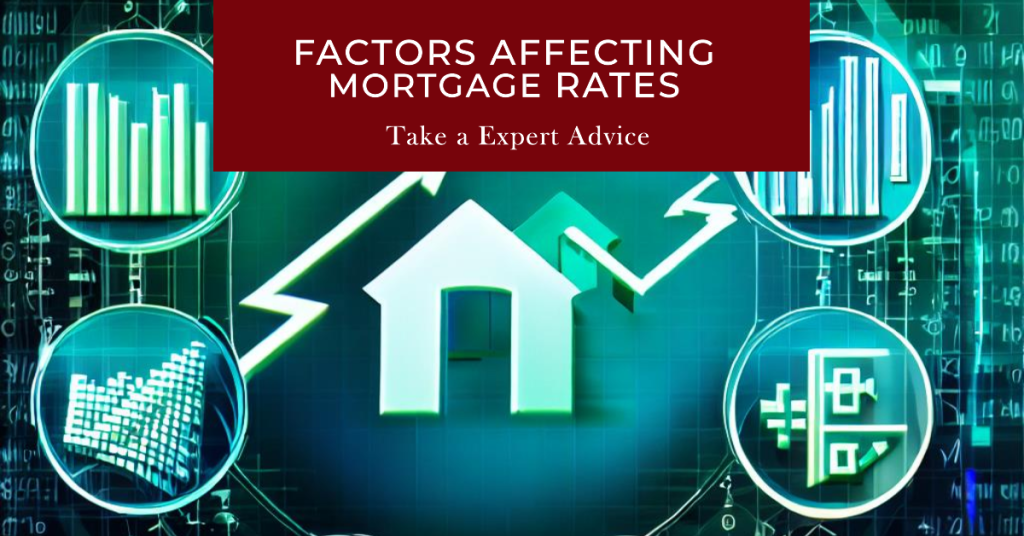Introduction to Mortgages
Are you thinking of getting rid of a mortgage to repay a few debts? A mortgage can be beneficial, but first, you must comprehend the Mortgage Basics. Mortgages are a type of loan used to buy real estate, like a house or a business.
This loan is often secured by the property being acquired, giving the lender the ability to take the asset to recoup their losses if the borrower cannot make loan payments.
Before signing a mortgage agreement it’s crucial to comprehend the basic of mortgage because getting a mortgage might be complicated. However, this article will walk you through various mortgage types, factors that determine mortgage rates, qualifications, and pre-approval procedure. Let’s begin, then
Mortgage Basics Types

Many different types of mortgages are available, each with its terms and requirements. Some most Mortgage Basics types of mortgages include:
Fixed-Rate Mortgages
A fixed-rate mortgage is a type of home loan where the interest rate remains constant for the entire term of the loan. This means that the borrower’s monthly payments will remain the same throughout the life of the loan, making it easier to budget and plan for the future.
Fixed-rate mortgages are popular among homebuyers because they offer predictability and stability. When originating the loan lenders set the interest rate on a fixed-rate mortgage and it remains unchanged regardless of whether interest rates in the broader economy increase or decrease.
The term of a fixed-rate mortgage is typically 15, 20, or 30 years, with 30-year terms being the most common. This longer-term approach means that borrowers can spread their payments out over a longer period, making the monthly payments more affordable.
Fixed-rate mortgages are often the preferred choice for borrowers who plan to stay in their homes for longer, as they provide long-term predictability and stability. They are also good for borrowers who prefer a traditional, straightforward mortgage product without the complexity of adjustable interest rates or other features.
However, fixed-rate mortgages typically come with higher interest rates than adjustable-rate mortgages (ARMs) because the lender assumes the risk of interest rate fluctuations. Additionally, borrowers may not be able to take advantage of falling interest rates if they have locked in a fixed rate.
Adjustable-Rate Mortgages
An adjustable-rate mortgage (ARM) is a form of domestic Mortgage Basics in which the hobby price can extrade over time, normally in reaction to adjustments withinside the broader economy.With an ARM, the borrower’s month-to-month bills can growth or lower primarily based totally on modifications withinside the hobby rate.
Most ARMs have an initial fixed-rate period, typically between three and ten years, during which the interest rate remains constant. After this period, the interest rate can adjust annually or on another predetermined schedule based on a benchmark interest rate, such as the London Interbank Offered Rate (LIBOR) or the Constant Maturity Treasury (CMT) rate.
One advantage of an ARM is that they often come with a lower initial interest rate than fixed-rate mortgages, which can make them more affordable for borrowers during the fixed-rate period. Additionally, if interest rates in the broader economy fall, the borrower’s interest rate and monthly payments may decrease.
Government-Backed Mortgages
A federal government agency insures or guarantees domestic loans, known as government-subsidized mortgages. These mortgages are designed to guide borrowers who have poor credit a low income or other factors that would disqualify them from conventional mortgages.
There are 3 essential forms of government-sponsored mortgages:
(FHA) Federal Housing Administration Loans:
FHA loans are backed by the Federal Housing Administration and are designed to help low-to-moderate-income borrowers who may not qualify for conventional mortgages. These loans require a down price of most effective 3.5% of the acquisition charge and feature extra lenient credit score necessities than traditional loans.
U.S. Department of Veterans Affairs (VA) Loans:
VA loans are to be had to eligible veterans, active-responsibility provider members, and their surviving spouses. The Department of Veterans Affairs backs these loans and offers 100% financing with no down payment required.VA loans additionally have extra lenient credit score necessities than traditional loans.
U.S. Department of Agriculture (USDA) Loans:
USDA loans are designed to help rural borrowers with low-to-moderate income levels. The U.S. Department of Agriculture backs these loans and offers 100% financing with no down payment required.
Jumbo Mortgages
A jumbo mortgage is a type of home loan that exceeds the limits set by the Federal Housing Finance Agency (FHFA) for conventional mortgages. In 2021, the limit for most areas in the United States will be $548,250 for a single-family home, but in high-cost areas, the limit can be as high as $822,375. Jumbo mortgages are used to finance homes that exceed these limits.
Lenders generally consider Jumbo mortgages riskier than conventional mortgages. Due to the larger loan amount and the potential for higher default rates. As a result, jumbo mortgages typically have stricter underwriting criteria than conventional mortgages. Including higher credit score requirements and lower debt-to-income ratios.
One advantage of jumbo mortgages is that they allow borrowers to finance homes that may be too expensive for a conventional mortgage. .However, jumbo mortgages commonly have better hobby fees and can require a bigger down price than traditional mortgages.
Factors Affecting Mortgage Rates

Numerous factors affect mortgage rates, including:
Economic Indicators:
Inflation, GDP growth, and unemployment rates are a few examples of factors that have an impact on mortgage rates. When the economy is growing, mortgage rates may rise, and mortgage rates may fall when the economy is slowing down.
Federal Reserve Policies:
The Federal Reserve can influence mortgage rates through its monetary policies. For example, mortgage rates may also decline when the Federal Reserve lowers interest rates.
Bond Yields:
The yields on U.S. Treasury bonds are frequently a factor in mortgage rates. When bond yields rise, mortgage rates may also increase, and when bond yields fall, mortgage rates may decrease.
Credit Score:
Lenders typically view borrowers with higher credit scores as less risky which leads to these borrowers receiving lower mortgage rates.
Loan-to-value Ratio:
The loan amount is compared to the value of the property to determine the loan-to-value (LTV) ratio. Borrowers with a lower LTV ratio typically receive lower mortgage rates because they have more equity in their property.
Type of Mortgage:
Different types of mortgages may have different interest rates. For example, adjustable-rate mortgages (ARMs) may have lower interest rates initially.
Still, they can be subject to rate adjustments over time, while fixed-rate mortgages (FRMs) may have higher interest rates. But provide more stability and predictability over the life of the loan.
Geographic Location:
Local market conditions and the property location influence the variability of mortgage rates.
Qualifying for a Mortgage
Qualifying for a mortgage requires meeting certain criteria and providing documentation to demonstrate creditworthiness and the ability to repay the loan. This may include credit score, debt-to-income ratio, employment history, income, down payment, property appraisals, documentation, and loan types.
Mortgage Pre-Approval
Mortgage pre-approval is getting a lender’s commitment to lend a specific amount of money to a borrower for a home purchase, subject to certain conditions.
The key aspects of the mortgage pre-approval process may include application, credit check, verification, evaluation, a pre-approval letter, and conditions.
Bottom Line
Mortgages are a key tool for purchasing real estate, but they can also be complex and involve significant financial commitments. It’s important to understand the Mortgage Basics before agreeing with a lender, including the types of mortgages available. The terms of the loan, and the costs involved.
With the right knowledge and Trust tax advice. Borrowers can make informed decisions about their mortgages and achieve their real estate goals.









